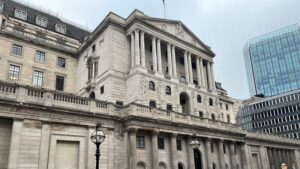Bank of America Merrill Lynch suggests that Carney may be trying to ensure that the UK economy is not unduly affected by the turmoil surrounding a Brexit vote by keeping rates lower for longer.
The group says: “(The negotiation process) may not be the perfect recipe for political stability and could dominate government time to the detriment of consolidating the economic recovery. If polls remain close through next year, any monetary policy normalisation may need to consider potential Brexit-related volatility/fallout.”
Although the impact of a Brexit is impossible to judge until the terms of that exit are known, BoA Merrill Lynch points out that an exit without negotiating the conditions of access to the single market, would be ‘detrimental to an economy marred by a structural current account deficit and highly dependent on an essentially cross-border financial sector’.
It points out that the volatility is likely to start ahead of any vote and would be seen, in particular, in the UK currency. It believes that sterling is already over-valued and would decline as capital flows into the UK slowed ahead of any vote.
In this environment, there is certainly an argument for retaining an accommodative monetary policy to shore up the UK economy. However, does this risk storing up trouble later on? Or more dramatic rate hikes after a Brexit vote?
As Shaun Port, CIO of Nutmeg points out, the UK economy is still very strong: “The Bank of England is forecasting very healthy growth of 2.7% next year, despite being less optimistic on global growth. The UK domestic economy is strong, with house price inflation re-accelerating. We disagree that emerging market outlook has deteriorated in the past three months. In fact, Chinese growth prospects have improved recently…. Service sector inflation is picking up, and while goods prices are falling sharply, service sector inflation is far more persistent long-term.”







